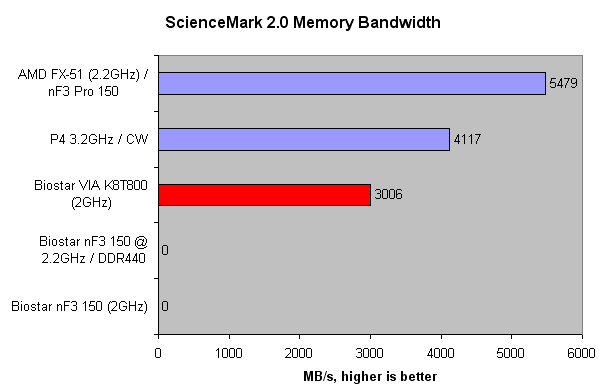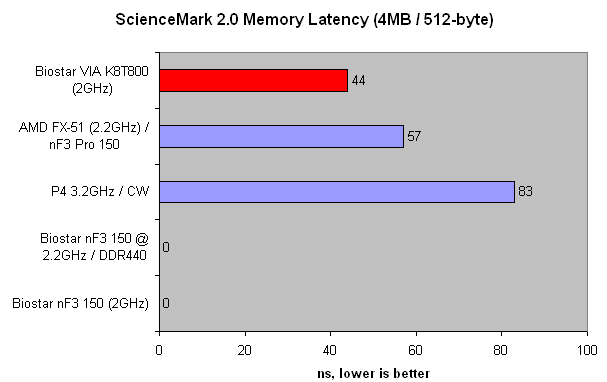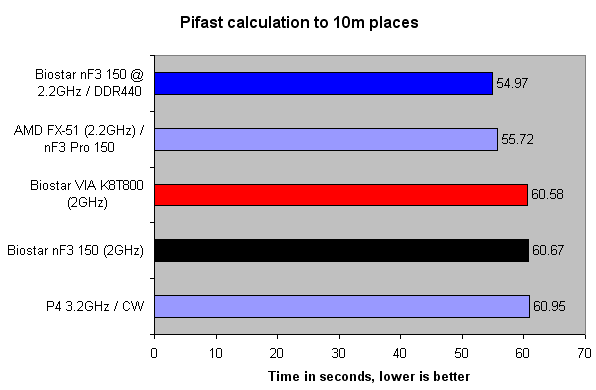ScienceMark 2.0, Pifast
ScienceMark 2.0 has provided us with valuable information pertaining to bandwidth and latency for various chipsets. It's a firm foundation on which to draw some tentative assertions from.
First things first. The Biostar nForce 150 motherboard, the K8NHA Pro, would absolutely refuse to run this benchmark. It would continually reboot or freeze in Windows XP. No amount of BIOS tweaking resolved the problem. We must note that barring ScienceMark 2.0 the board was extremely stable. It didn't crash once in any other benchmark.
We would expect the dual-channel monsters to take a sizeable lead here, however we're also impressed with the 3GB/s bandwidth exhibited by the Biostar K8VHA Pro. That's close to its theoretical maximum of 3.2GB/s and relatively close the P4's 4.1GB/s.

Another case of the K8NHA crashing in ScienceMark 2.0. The benchmark was re-installed to no avail. What's shockingly impressive is the 44ns latency of the K8VHA board. That's a combination of unbuffered RAM, low manually-applied latencies in BIOS, and the fabulous on-die memory controller. It may not have P4-beating bandwidth, but its bandwidth is of the super-low kind.

This all translates into the P4, on a heavily tweaked ABIT IC7-MAX3, being relegated to last place in our first test, Pifast. It loves bandwidth and low-latency access, and it gets it in spades from both Biostar boards. Notice how the K8NHA Pro, run at 2.2GHz with DDR440 2-6-2-2 timings, is able to beat out the dual-channel and supposedly better FX-51 here. That's wholly impressive performance. It shows just what the Clawhammer, when equipped with decent memory, can do. It's looking extremely bright from the outset.









